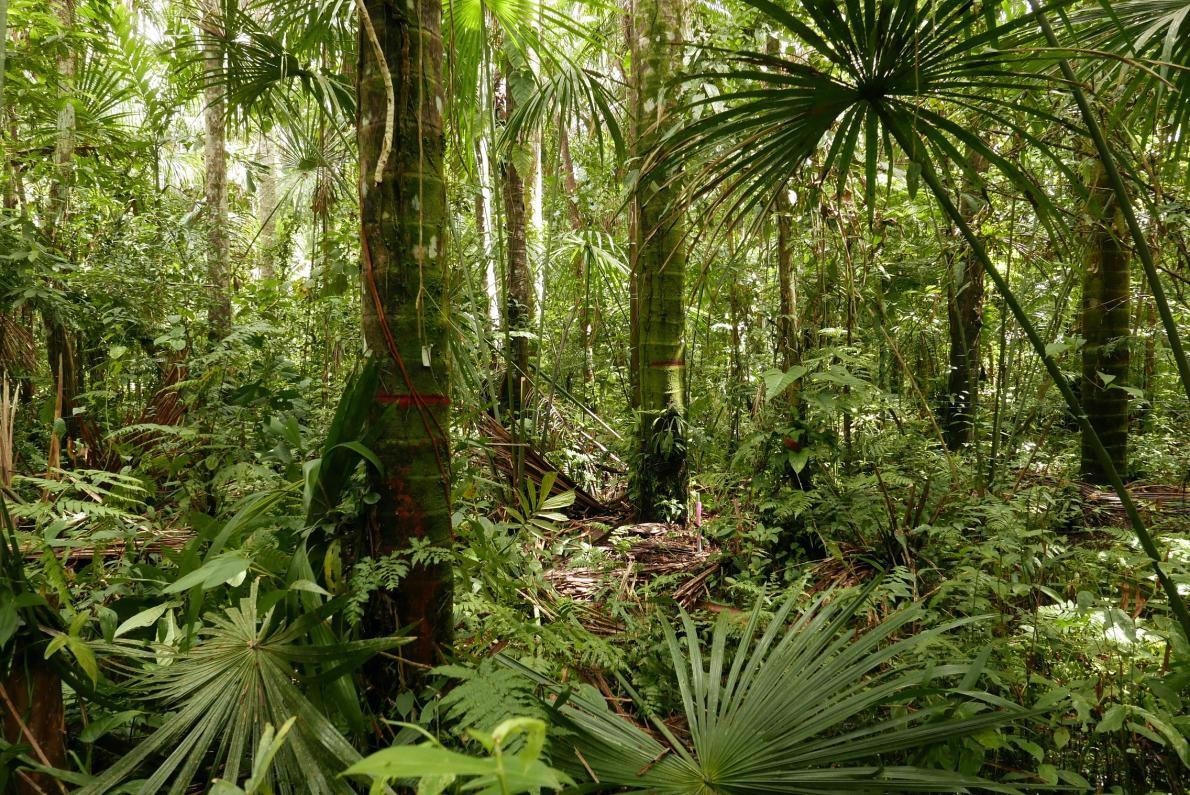A new study indicates that the biggest peatlands in the Amazon rainforest, which maintain an immense and concentrated amount of carbon, fall under the increasing threat of modifying land use.
 Palm swamp in lowland Peruvian Amazonia. Image Credit: Ian T. Lawson, University of St Andrews.
Palm swamp in lowland Peruvian Amazonia. Image Credit: Ian T. Lawson, University of St Andrews.
CO2 Emissions
Immediate action is needed to avoid carbon gas emissions from decomposing peat swamps present in lowland Peruvian Amazonia (LPA) - which are much greater compared to what was thought earlier.
A small but increasing area of deforestation throughout the LPA was discovered by the researchers, including an 11-fold increase in CO2 emissions associated with mining, between 2000 and 2016.
Peat Density
The study headed by the University of Edinburgh and the University of St Andrews utilized field, satellite and land-cover data to evaluate detrimental greenhouse gas emissions, develop maps and make the first data-driven peat thickness models of Peru’s tropical peatlands.
Field teams, including researchers from the University of Leeds, Peru’s Instituto de Investigaciones de la Amazonía Peruana, and other collaborating institutions, charted new stretches of peat swamps and evaluated the distribution of peat throughout Peruvian Amazonia for the first time.
Precious Resource
At 62,714 km2, an area around the size of Sri Lanka, the peatlands consist of twice as much carbon as initially estimated.
Peat in the LPA has the capacity to store nearly 5.4 billion tons of carbon, which is nearly as much as all of Peru’s forests but in just 5% of its land area. This shows what a useful resource these peatlands are, states the experts.
Under Threat
Tropical peatlands are one of the most carbon-dense ecosystems throughout the world. However, infrastructure development, agriculture expansion and mining have resulted in the loss of huge peatland areas.
Drainage and deforestation hinder the collection of crucial organic matter in the swamps and boost the quick decomposition of peat. This, in turn, releases huge amounts of nitrous oxide and carbon dioxide into the air.
Furthermore, drained peatlands are prone to fires which can result in a huge and quick increase in emissions.
Legislation
In realization of these hazards, Peru has passed legislation that, initially, warrants the clear safety of its peatlands for climate-change mitigation.
Enforcing this legislation will rely on constant mapping of peatland distribution and upon an additional investigation of its carbon storage.
We knew that Peru contained substantial peatlands but we previously only had ground data from a few regions, and we didn’t realize how extensive the peatlands were. Our high-resolution maps can be used to directly inform conservation and climate mitigation policies and actions such as Nationally Determined Contributions to the Paris Agreement, to avoid further degradation and CO2 emissions.
Dr. Adam Hastie, Study Lead Author, School of GeoSciences, University of Edinburgh
“Peatlands are increasingly recognized as carbon hotspots and a key component of the planet’s carbon cycle. They store half of all the soil carbon on the planet, but they’re vulnerable to human pressures. It’s important for all of us that we know where they are so that we can protect them and help to mitigate climate change,” stated Dr. Ian Lawson, the International project lead from the University of St Andrews.
Lawson stated, “This work is the latest result of more than a decade of sustained international collaboration. It has taken a lot of effort by the team, making measurements and collecting samples throughout the swamp forests, to produce this first map of peatlands covering all of Peru’s Amazonian region. The next step is to apply the same methods in other parts of the Amazon Basin. There’s still a lot to be learned.”
Our peatlands in Peru have the potential to mitigate climate change because the sustainable use of the most abundant peatland palm species, Mauritia flexuosa, can be promoted.
Dr. Dennis del Castillo Torres, Project Partner, Instituto de Investigaciones de la Amazonia Peruana
“Conserving peatlands will also support livelihoods and prevent a situation like South-East Asia where almost 80 percent of peatlands have been cleared and drained,” added Dr. Euridice Honorio Coronado Co-author and NERC Knowledge Exchange Fellow of the University of St Andrews
The study was financially supported by NERC, Leverhulme Trust, Gordon and Betty Moore Foundation, Wildlife Conservation Society, Concytec/British Council/Embajada Británica, Lima/Newton Fund, the governments of the United States of America & Norway Knowledge Exchange Fellowship.
The researchers thanked SERFOR, SERNANP and GERFOR for offering research permits, and the local and indigenous communities, research stations and tourist companies for providing approval and enabling access to the forests.